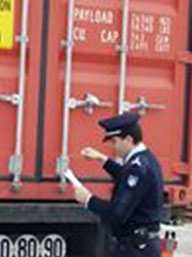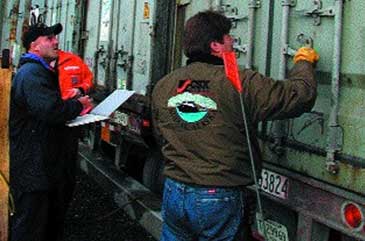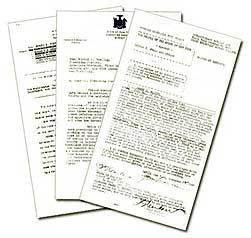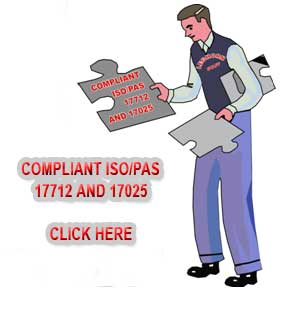| Welcome to LEGHORN security seals Company |
|
 |
|
Welcome to LEGHORN security seals Company
We are one of the leading manufacturer of tamper-evident security seals and locking devices.
We love so much our work that we try to be everywhere in any moment with the right solution against loss and tampering problems.
Since ancient times, security seals have been used for sealing envelopes, rolls, boxes and other containers with the aim to reveal to the addressee eventual violations or replacements, in part or in all, of the security seals. |
 |
|
| The first security seals we know were the adherence type ones, like the adhesive clay and, later, the sealing wax, which keep together with a tape or a lace the movable part from the fixed one of the container. The characterization of the security seals came from the impression of the coat of arms or the logotype of the shipper onto the plastic material.The verification’s validity at the place of arrival depended on the capability of the receiver to recognise the impressed coat of arms as authentic. |
|

|
Till today, this formality is used for these security seals destined to preserve the integrity of low risk things, like a pot of jam, where the screw-on lid is tied to the pot with a strip of paper with the manufacturer’s logotype, glued on the two parts.
Unfortunately, this formality is already used by the Investigation Authority, in order to affix an official seal to rooms, where has been committed a crime.
Further, for its adaptability, it had been adopted a lead block onto which was impressed the origin logotype. That’s also done nowadays.
The verification level of the security seals at the place of arrival was always tied to the capability to recognise the logotype. |
|
In the following stage of the technical development of the security seals, it was introduced, next to the shipper’s or manufacturer’s logotype, also a digit numeration that, mentioned on the transportation documents, allowed to the receiver to verify if the serial number of the seal corresponded with that one chosen by the shipper. |
 |
|
| (This development of the combination logotype/serial number, brought an advantage, but it has been in the daily practice very reduced because the logotype is very often eliminated in order to decrease expenses, using anonyms security seals with the serial number only). The nomenclature of the security seals we use nowadays is the following: |
|
The irreversible element of closing is given by the head, which correspond in the old technology to the compressed lead seal. On this head, of various shapes, is impressed a logotype.
In the security seals made of plastic material, joined together with the head, there’s a label with the digits and serial number, in relief, of the most reliable and of the less reproducible. |
|

|
The application lace of the security seals can be of the movable, separated or integrated type, obtained from the same unique production printing of the seal, both made of plastic, both of metal.
Therefore, the difference between the lead seal with the impressed logotype and the security seals printed and numbered consists of the matter that, while the lead seal gives only a generic information about the identity of the person, who made it, the security seal allows an additional verification to ascertain if really the seal is the expected one, based on the serial number mentioned on the transportation documents. |
|
Additional improvements of the security seals with serial numbers allow verifying with more sophisticated and reliable means, in comparison with the only verification at sight that the seal is really that one affixed at the place of departure and not its more or less skilful reproduction.
Towards this situation renders help the electronic technology allowing the comparison of the serial number, contained in a data string inserted at the origin into the body of the security seals, with the string of a data reader (virtual key of comparison) given to the receiver, and also by sending data, in certain configurations, by data transmission. |
 |
|
Therefore, for this formality it’s essential that the data string for verifying the seal have been sent in advance by data transmission at the place of the physical arrival of the same container. This is allowed by the procedure of sending documents, on the air, by data transmission. |
|
 |
 |
|
|
|
|
|
| |
|
|
|